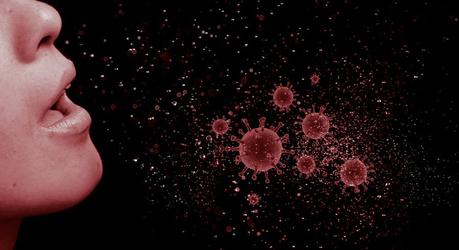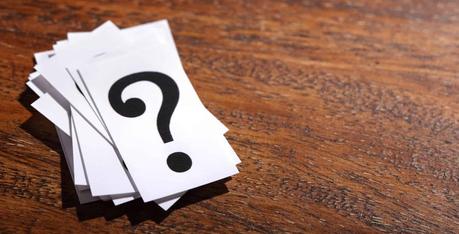It is important that you know how to clean your bedroom of Coronavirus, or more specifically, of Covid-19. Here, we shall give some advice on how to make sure that your mattress and the various items of bedding are safe to use without the likelihood of you or anybody else coming into contact with the virus responsible for this worldwide pandemic. In fact, the word 'pandemic' means a 'worldwide epidemic.'
Viruses and Antibiotics: Antibiotics do not harm the coronavirus. This is because antibiotics are designed to kill living bacteria, while the coronavirus is not a living entity. Viruses are very small - the smallest bacterium is larger than the largest virus. A virus is composed of a core of genetic material cover with a coating of protein. They must have a host to survive and reprogram body cells to generate new viruses. Ultimately, the body cells burst and die. Sometimes they can turn normal cells into cancer cells. Viruses are specific in the cells they attack: they may be blood cells, liver cells, or respiratory cells in the lungs for example. Coronaviruses attack the cells of the respiratory system. Antibiotics do not affect viruses.
Before we continue, it's important that you understand the meaning of the terms being used such as Coronavirus, Covid-19, SARS, etc. It all started in 2003, though may have been in existence before this. Here are the known outbreaks of the Coronavirus.
Table of Contents
- SARS-CoV: This refers to an outbreak of a strain of coronavirus that occurred in 2003. It was commonly known as SARS (Severe Acute Respiratory Syndrome) though its correct name was SARS-CoV or SARS Coronavirus. It led to over 8,000 infections and 774 recorded deaths.
- MERS-CoV: Short for Middle East Respiratory Syndrome, this coronavirus strain broke out in Saudi Arabia in 2012 and spread throughout the Middle East leading to the deaths of hundreds of people from the disease known as MERS.
- SARS-CoV-2: This is a strain of coronavirus that causes the disease known as Covid-19, so-called because it was first identified in 2019. Its symptoms are similar to those of the previous two strains and it has lead to many more deaths than either of these.
The advice given below applies to all coronavirus strains including any new strains identified during the progress of the current pandemic. Our recommendations work irrespective of the strain, whether that is the original strain or the South African, British, Brazilian, or any other strain of coronavirus identified. They also work on other viruses unconnected with the coronavirus.
The Coronavirus, including the current strain that causes Covid-19, is spread by means of the droplets formed when somebody with the coronavirus infection sneezes, coughs or even speaks. You are likely to catch the infection if you are breathing within a meter or around 3 feet 3 inches of somebody with the infection. This distance is reduced if the infected person is wearing a mask, but the mask may not completely prevent the virus from spreading in enclosed spaces.

You can also get it by touching any surface with the live virus on it, then touching your mouth, nose, or eyes before you wash your hands. It is important to make sure your bedroom is virus-free, and here is Inside Bedroom's advice on how to effectively clean the surfaces in your bedroom so that nobody entering it can get infected.
There are two steps to cleaning a bedroom of coronavirus. The first step involves cleaning the article of general dirt: organic matter tends to retard a disinfectant in its efficiency of killing viruses. The second step, after the cosmetic cleaning, is to kill the virus still alive on the item. This item could be a mattress, a sheet or blanket, a comforter or duvet, and any other item or surface within the bedroom room. The latter could be a nightstand, drawer or door handles, dresser, armoire or wardrobe, and hanger rails for dresses and other items of clothing.
Cleaning with a detergent or soap reduces the population of germs or viruses on surfaces in your bedroom. It cleans them up and reduces the population but does not necessarily kill them. Step 2, disinfecting them, kills viruses and bacteria on surfaces. It achieves this by using chemicals that are fatal to germs. The most common of these chemicals is the chlorine, or sodium hypochlorite, in bleach, but there are many others such as those used in antiseptics such as Savlon, Lysol, and Dettol.
Hard Surfaces: Keep the bedroom well ventilated while cleaning. Open any windows and doors before starting, but keep inside doors closed so that any infection cannot spread further into your house. Wear gloves when cleaning hard or soft surfaces. The surfaces mainly at risk are those most frequently touched or handled, such as doorknobs or handles, taps or faucets, light switches, handrails, cooker control knobs and don't forget the electronics: TV switches or buttons, laptop and tablet keys, mobile phones, telephones, sports items such as golf clubs and tennis rackets, kettle and cooking pan handles and toys. Don't forget to clean your glasses if you wear them.
For Step 1, use soap or liquid soap on a sponge to clean over the surface, and then for Step 2 apply a disinfectant. Bleach or cleaners containing at least 0.05% sodium hypochlorite (NaClO) would be a good choice for ceramic or laminates, although you can also use commercial disinfectants such as Lysol, Dettol, or Savlon.
Solutions containing at least 60% ethanol (ethyl alcohol) are also very effective. Many alcohol-based hand sanitizers meet this requirement while some include 70% of ethanol. Wash or sanitize your hands before commencing cleaning and when finished. Keep your hands away from your face or any other areas of exposed skin while cleaning.
In addition to furniture, other hard surfaces you should regularly clean include light switches, drawer and door handles, wooden flooring, carpets (use a good carpet shampoo,) bed headboards and footboards, TV and radio and controls, curtains, blinds, and window sills and handles. Don't forget portable items such as a mobile phone or alarm clock that can be moved from room to room. Children's toys will also have to be given a regular cleaning.
Soft Bedding: Step 1 is to wash your bedding at around 40 o C using a biological powder. A higher heat setting is not necessary. Step 2 is to tumble dry on a high heat setting for a minimum of 28 - 30 minutes. Doing this will kill off any coronavirus on your sheets, toppers, etc. Feather-filled bedding should also be washed in this fashion.
Drapes and Curtains: Don't forget your drapes or curtains. Many people do, and you or your children can get contaminated with coronavirus if it has been spread to these by anybody touching them. Wash them in the same way as recommended for bedding.
What Not to Do:- Clean when needed, unless the person already has the virus and is showing symptoms of Covid-19.
- Do not allow bedding to be shared. Everybody should be allocated their own set of bedding: sheets, comforters, protectors and toppers, etc.
- Do not shake any items of bedding to remove loose debris. Out it right into the washing machine straight from the bed,
- Make sure the washing temperature is up to, but not above, any maximum stated on the label or washing instructions.
- Do not machine-dry above 40oC - you will get no benefit by doing that and may shrink the fabric. 40oC is sufficient to kill off any coronavirus present, irrespective of its strain.
- If it is sunny outside, hang out your clothes to dry in the sun - its UV radiation will kill any germs left. This does not mean that active viruses will be left after washing, but it is another level of security.
If somebody has the coronavirus and is displaying symptoms, leave washing until they are better. However, pillowcases should be cleaned daily. You should make sure you clean your hands frequently when cleaning solid surfaces or bedding. Soap and hot water or hand sanitizers will be effective in keeping your hands free from the coronavirus. Never touch your face with your hands when cleaning solid surfaces or textiles.
First, give a clean with a vacuum cleaner, then you can find information on how to clean a mattress thoroughly on our website. Follow the instructions, and then finish off with a spray of antiseptic - either Savlon spray or Lysol Disinfectant Spray. That will kill off any residual virus. Cleaning a mattress fundamentally involves cleaning the surfaces. If you use a mattress protector, then machine wash that as for soft bedding above and spray the entire mattress surface with the antiseptic. Lysol has been approved by the American EPA as suitable for killing the ASRS-CoV-2 virus, commonly referred to as 'the coronavirus'.
Children's Rooms and Toys
Don't forget the children! Their toys will need a good, regular clean. Soft toys, such as teddy bears, will need regular cleaning - at least monthly. You can machine wash soft toys without batteries at 60 o C. If possible, put the soft toy in a washing bag to protect eyes and hair. If the toy has a non-removable battery or cell packs then you should spray it with a solution containing at least 70% alcohol. Cleaning with Dettol or Savlon will also kill viruses, but be careful to clean these off the toy once you have finished cleaning.
Hard toys, including those that are battery-operated, can be cleaned with a disinfectant solution such as Lysol, Dettol, or Savlon. They can also be used in sprays to clean soft toys with batteries. If you are unsure where to get them, such antiseptic solutions can be purchased online. The EPA has found that Lysol Disinfectant Spray kills the coronavirus within two minutes of contact. Check out the EPA statement here.
This spray can also be used on hard surfaces to kill any coronavirus residues present. The same is true for any child's toy from which you want to remove any potential coronavirus, including the SARS-CoV-2 coronavirus plus variants. You can use it on anything plastic, wood, or metal or that cannot be machine-washed. Keep in mind that you should wash your hands after cleaning each surface. A 70% + alcohol sanitizer will do the job. You should also clean any sponge or brush you use before using it on another surface. Also, machine wash any towel you use to dry your hands. In fact, the best idea is to retain one sponge for each surface, washing each sponge between uses.
Floor Cleaning
Carpets: First vacuum any carpets you have in your bedroom. Empty the vacuum cleaner frequently, and try to do so without spreading dust. You can also spray the dust collection compartment with a spray such as those mentioned above. This will help to prevent the spread of the virus.
Vinyl/Laminate: If you have vinyl or laminate flooring, then you can first vacuum or mop over the flooring, and then kill the virus with a cup of white vinegar in a gallon of warm water.
Hardwood Floor: Do not use this method on hardwood bedroom flooring, either blocks or planks. The water can distort the wood blocks or planks. It is better to use Lysol hard surface cleaner for sealed wood flooring in your bedroom.
The objective here is first to remove any loose dust or dirt, and then to clean the flooring of any residual viruses. This is particularly important with carpets, where viruses can remain in the pile after vacuuming. Although we recommend Lysol, you can use any antivirus solution that doesn't contain bleach, chlorine, or any other chemical that may damage your carpet. Too much water on untreated wood can cause the wood to swell or lift away from the floor.
Cleaning a bedroom from Coronavirus is largely a matter of common sense. For hard surfaces, you first clean off the surface dirt or contamination with your regular cleanser and then kill any surviving viruses with an antivirus solution or spray, a proprietary antivirus solution such as Lysol, or a sanitizer containing at least 70% alcohol. For bedding, you should wash it at around 40oC and tumble dry it at a high heat setting, or air dry it in direct sunlight.
Always sanitize your hands before and after each step of cleaning. Keep in mind that cleaning surfaces with damp cloths and wet mops is more effective than using dry methods (sweeping and dusting with dry cloths.) Damp methods that absorb and kill viruses are less liable to disturb them and distribute them into the air.

You must understand how to clean a bedroom of the coronavirus properly. Unless you do this correctly you can put yourself and your family at risk. Cleaning a bedroom involves more than just cleaning the bedding, but also the mattress, hard surfaces, drapes, flooring, and other surfaces such as keyboards, door handles, and switches.
If you follow the above advice on how to clean a bedroom of coronavirus, you should be able to keep Covid-19, otherwise known as SARS-CoV-19, at bay. Incidentally, Covid is short for Corona Virus Disease and is not the disease itself. That is Covid - and Covid-19 refers to the 2019 form of the disease, correctly referred to as SARS-CoV-19.
Disclaimer: The information contained herein does not constitute medical or other professional advice on the properties of antivirus cleaners or of the coronavirus itself. This information does not take your specific circumstances into account, nor should it be acted upon without a full understanding of your current situation. We cannot offer any undertaking or guarantee, either expressly or implicitly, including liability towards third parties. The information in this article was current at the time of publishing, but guidelines and advice can change quickly. Check with your local public health department for current guidance.

